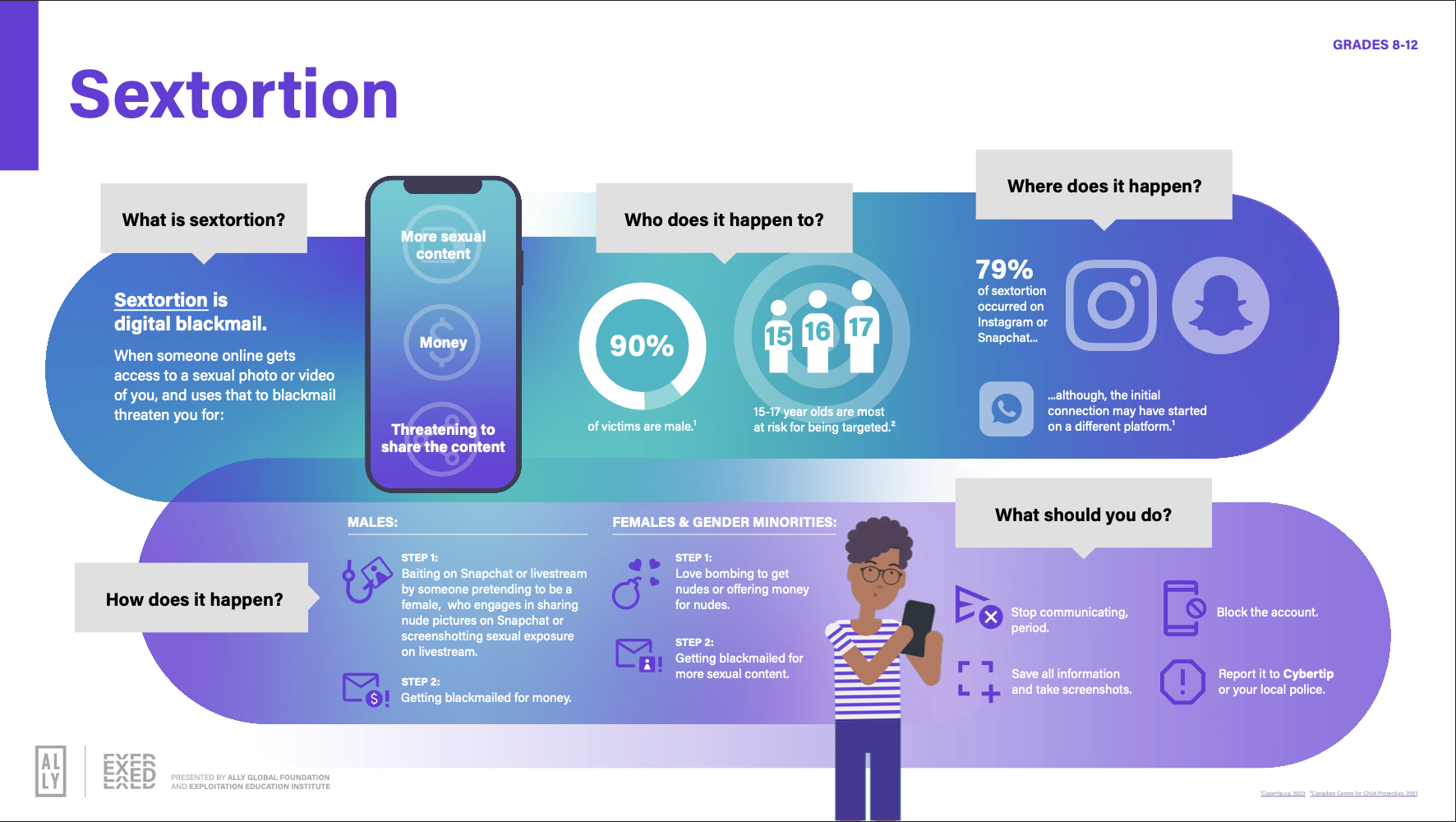Sextortion Is Surging: The Fastest Growing Crime Targeting Teens Online
Sextortion not the new cyberbullying nor is it about sex. It is not a scandal or a lapse in judgment.
Sextortion is a crime that is rooted in control and exploitation. And right now, it is one of the fastest growing forms of exploitation affecting youth and young adults around the world.
What sextortion is
Sextortion occurs when a person is coerced into sharing sexual content and that content is then used as leverage against them. The offender then demands more images, explicit videos, sexual acts on camera, or money. If the victim refuses, the offender threatens to send the content to family, friends, schools, employers, or post it online.
Who the offenders are
There are two primary categories:
Individual offenders
Often posing as peers. They focus on control and sexual gratification. These offenders typically tend to target girls or people in the LGBTQ2S+ community.
Organized criminal networks
Often based overseas. Their goal is financial extortion. These networks operate at scale, targeting dozens or hundreds of victims, mostly boys.
How sextortion is happening today
Sextortion has shifted into a scalable, industrialized model driven by social platforms, gaming environments, encrypted messaging, and increasingly, AI.
There are three common patterns:
Posing as a teen or a peer
Common Platforms: Instagram, Snapchat, Live Stream’s like Omegle, Discord
• Offenders create fake accounts posing as teens.• Within minutes of conversation, they move the victim to a private or disappearing-message platform.
• They ask for photos or initiate “shared nudity” via video.
• The moment content is sent, the threats begin.
This is the dominant pattern used against boys, often by organized criminal networks whose goal is financial extortion.
Relationship-based grooming
Common Platforms: Instagram, Snapchat, Discord, gaming voice chats, Omegle, VR spaces
• Offenders build a relationship over days or weeks posing as a romantic interest, a protector figure, or an online friend.
• Sexual content is requested slowly, framed as “trust,” “love,” or “proof of loyalty.”
This is seen more frequently with girls and involves emotional manipulation rather than immediate threats.
Hacked images or AI deepfakes
Common Platforms: Anywhere
• Offenders gain access to previous images via hacking, device theft, or deepfake creation.
• They use the existing material to demand new content.
AI and sextortion
AI is accelerating sextortion in three ways:
AI-generated fake identities (hyper-realistic “peers”)
Offenders use AI to create attractive teen avatars, complete with consistent facial expressions and images, making fake profiles far more convincing.
AI face-swapping / deepfake content
Victims no longer need to send anything.
Offenders can take a photo from social media and use AI to generate explicit imagery.
This means:
• you can be sextorted without ever sharing anything sexual
• “I never sent anything” no longer protects a person from exploitation
Automated grooming and scaling
Offenders can use AI chat tools to keep multiple grooming conversations going simultaneously.
It is industrialization of exploitation.
What to do if you are a victim of sextortion
Once an image is sent, the victim feels like the control is gone. But legally and practically, it is not. If someone threatens to release sexual content, they are committing a criminal offense.
Additionally, when the victim is a minor, the moment sexual content is requested or received, the offender is in possession of child sexual abuse material.
So what should you do?
Stop responding.
Screenshot and save all information including the materials being used to blackmail.
Report the account to your local authorities or cybertip.
Block the account and user from all social platforms.
Why we need to talk about sextortion differently
If we remove shame, we remove the predator’s power. Talk to your kid about sextortion and let them know that if they are ever threatened, you are there to help protect them.





